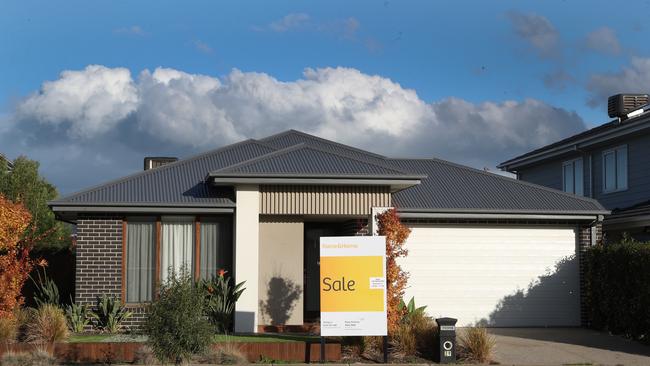RBA keeps interest rates on hold at 4.1 per cent as it warns that further hikes ‘may be needed’
The RBA has offered households relief from soaring mortgage repayments after leaving the cash rate on hold at 4.1 per cent, but warns that further rate hikes may be needed.

The Reserve Bank has held interest rates at 4.1 per cent in a move that will be welcomed by a rising number of households struggling to meet increasing mortgage repayments.
The decision by the RBA to keep rates on hold is just the second time it has decided to do so in the 14 times it has met since May 2022 and comes after a mixed month of economic data that showed further cooling to inflation, but labour market still very hot.
While the decision will put a smile on many faces, it is not expected to be the end for rate hikes with most economists forecasting one or two more interest rate rises this year to take rates to a potential peak of 4.85 per cent.
Westpac, NAB and ANZ expect a rate rise in August and for them to peak at 4.6 per cent this year, while Commonwealth Bank forecasts one more hike to 4.35 per cent.
RBA governor Philip Lowe said in his post meeting statement that the central bank expected that further tightening might be needed to ensure that inflation returned to its target band of 2-3 per cent. It comes after annual CPI fell more than expected in May to 5.6 per cent.
“Some further tightening of monetary policy may be required to ensure that inflation returns to target in a reasonable time frame, but that will depend upon how the economy and inflation evolve,” Dr Lowe said.
“The decision to hold interest rates steady this month provides the Board with more time to assess the state of the economy and the economic outlook and associated risks.

A potential thirteenth hike would see mortgage repayments increase by 52 per cent for the typical household since May 2022. Borrowers with a $500,000 have already seen repayments rise by $1134 in that time to $3469 per month, a total increase of $1701 on a $750,000 loan to and $2269 on a $1m mortgage, according to RateCity.com.au.
The RBA said that in deciding whether to lift rates again it would continue to pay close attention to developments in the global economy, trends in household spending, and the forecasts for inflation and the labour market.
“The Board remains resolute in its determination to return inflation to target and will do what is necessary to achieve that,” Dr Lowe said.
Tuesday’s move was widely expected by financial markets which had priced in a 25 per cent chance of an increase, with a survey of economists by Bloomberg show that 19 call for a pause and 13 expect the hike.
VanEck head of investments Russel Chesler said that the decision by the central bank could give consumers a false sense of security that rate hikes were done.
“Just because the RBA holds steady in July doesn’t mean another rate rise isn’t around the corner in August,” he said.
“Inflation will not start to meaningfully recede until there is higher unemployment. We anticipate that unemployment will start to rise over the next 12 months as amped up immigration adds to the supply of labour.”
Minutes from the previous RBA board meeting in June noted that the decision to lift the cash rate in June was “finely balance”, as it said that “members acknowledged the considerable uncertainty regarding the outlook for household spending and the financial stresses facing some households”.
CreditorWatch chief economist Anneke Thompson said the pause by the RBA meant that economic data released in June was not definitive enough to warrant a further increase at this stage.
“There is still concern about the very tight labour market and underlying inflation. Looking overseas, inflation in areas that are typically labour intensive is only decreasing very slowly, while price rises for goods are coming down faster,” she said.
“The RBA will now be hoping businesses slow their hiring intentions, taking some pressure off wages and reducing inflation in labour-intensive parts of the economy.







To join the conversation, please log in. Don't have an account? Register
Join the conversation, you are commenting as Logout